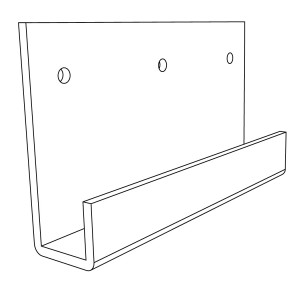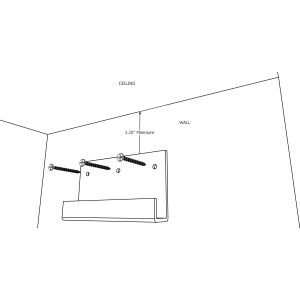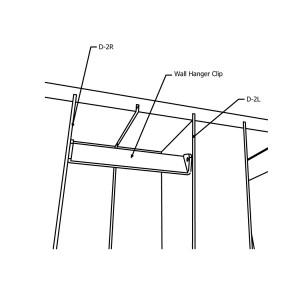The Acoustic Ramp is a wedge-shaped, quadratic residue diffuser (QRD) used to improve the acoustic properties of a room. The depth of the wells between the dividers changes over the length of the diffuser and this greatly improves the effective bandwidth. The ratio relationships between the well depths stay the same. The angled reflectors and wedge shape causes the effect of scattering both vertically and horizontally. We have done a lot of scientific testing and subject critical listening testing.
In critical listening rooms, an array of Acoustic Ramps make an ideal rear-wall treatment that helps to tighten the definition of imaging and clarifies the sound stage. In surround home theaters and group audiophile listening spaces, this rear-wall treatment helps to create a sense of envelopment and immersion for the listeners.
The goal of an Acoustic Ramp diffuser is to control the existing acoustics of the room WITHOUT absorbing the acoustic energy. A reflection of sound off of a flat hard surface can be disorienting and distracting. A reflection can mix with the source of the sound and cause comb-filtering which changes the timbre or tone-color of what you are hearing. People often describe the effect of comb-filtering as “hollowing out” the sound, making the sound “tinny”, or sounding like it is in a “garbage can.” Usually these are not the adjectives we want someone to use when describing our music!
The Acoustic Ramp is available custom built to your exact specifications. The standard Ramp is constructed of 1/2″ Rock Maple plywood reflectors, 1/8″ black powder-coated aluminum dividers and a 3/4″ Rock Maple plywood top plate. The Ramp is 24 1/8″ wide, 12 1/8″ deep and a hair under 45″ tall. Custom ramps are available in almost any size configuration, with any choice of materials with any color powder coating. Here’s photos and posts about some custom versions:
See-Through Acrylic at Andy Hong’s Kimchee Records
MDF and Pine Plywood at Echo Boston
Raw Aluminum and Rock Maple at Paul Pesco’s Studio 44
Custom-made Bamboo Stock Ramp



